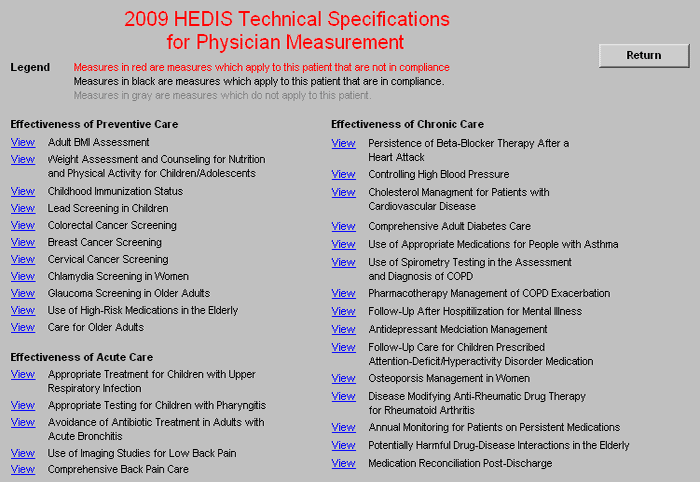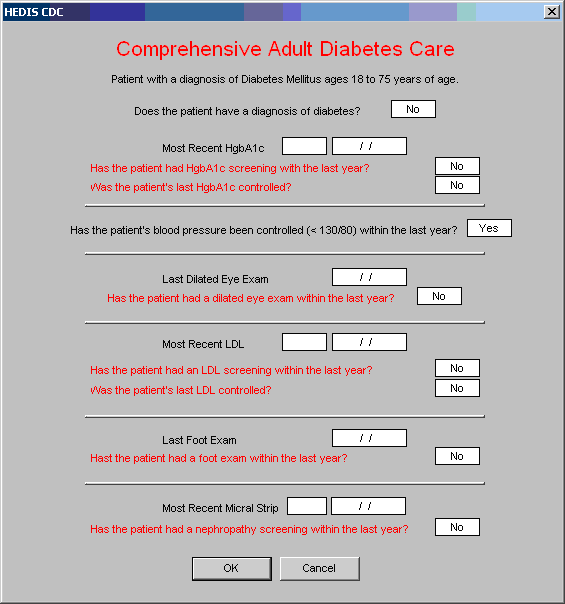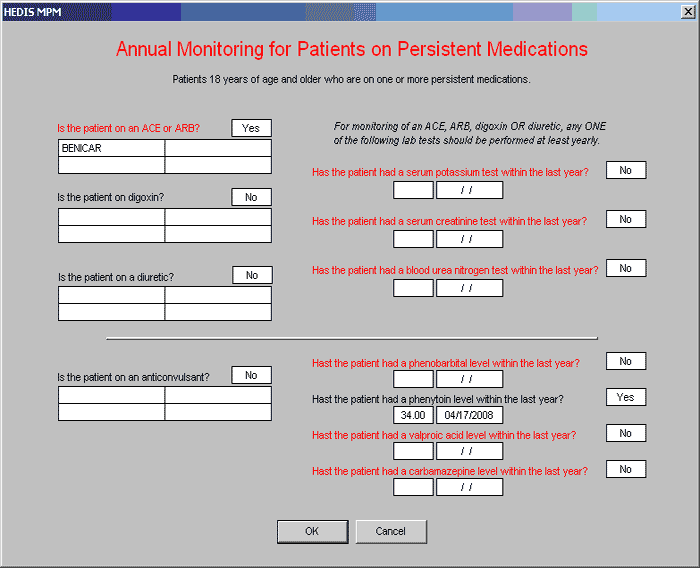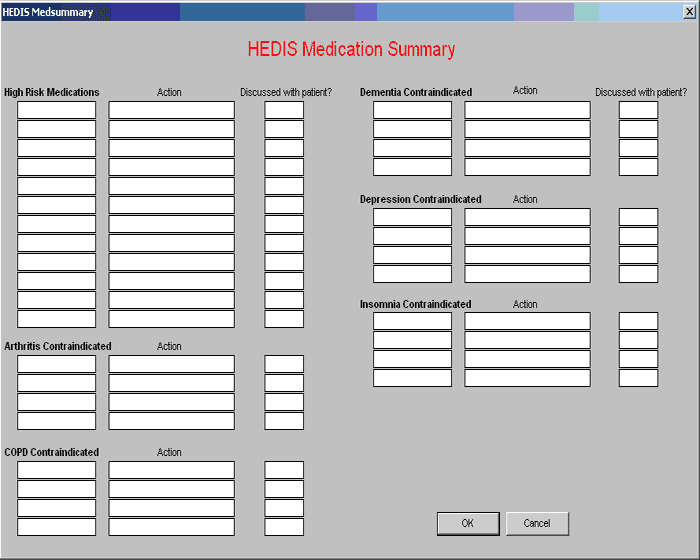"A test will be given next week," announces the teacher, instantly creating anxiety and apprehension in the class. "What will we be tested over?" What do we need to know? Relief sweeps over the class when the teacher announces, "It will be an open book test and here are the questions, you will be asked."
Excellent testing should be as educational of what the student should know, as it is evaluational of what he/she does know. Tests should indicate to the student what is important and test should not just be tools which shows the student what he doesn't know.
Often we associate test with a classroom setting in a formal educational program, but the reality is that all of life and all of our life experiences are a test of on sort or another. So it is with healthcare. Once a year by some health plans and less often by others, the performance of healthcare providers is measured. The testing tool is called HEDIS, which stands for "Healthcare Effectiveness Data and Information Set" HEDIS has various subsets of data collection. Some of the data evaluates health plan functions and some healthcare provider functions. It is the latter in which we are presently interested.
SETMA's Open Book Tests: HEDIS, NQF, NCQA, PQRI
HEDIS measures are developed by the National Committee on Quality Assurance (NCQA), which was formed in 1990. Annually, NCQA publishes an approximately 300-page HEDIS Technical Specification for Physician Measurement.
As SETMA has been developing its Medical Home, it occurred to us in that HEDIS and other measures of quality performance by healthcare providers are open-book test and in that the "professor" has given us the test questions, we should measure ourselves to see how we are doing. In addition, in that we have that data, we should share it with our patients and with our community. So, we shall.
While HEDIS is the major quality measure used in the healthcare industry, there are other significant ones including:
- Physician Consortium for Performance Improvement - this measurement set for various conditions such as hypertension, diabetes, congestive heart failure and others have been developed by the American Medical Association (AMA), the Centers for Medicare and Medicaid Services (CMS), the Institute of Medicine (IOM) and the medical and surgical specialty societies. These data sets are intended as "open-book tests of provider performance, where the questions have been given to the provider." The hope is that as providers measure their own performance that quality of care will improve. SETMA has embedded some of the Consortium's data sets into our EMR and we will report on the results of these as well as HEDIS.
- National Quality Forum (NQF) - In 1998, A report of the President's Advisory Commission on Consumer Protection and Quality in the Health Care Industry, proposed the formation of the Forum as a part of a national agenda for improvement in healthcare delivery. Formed in 1999, NQF's mission statement declared, "The mission of the National Quality Forum is to improve the quality of American healthcare by setting national priorities and goals for performance improvement, endorsing national consensus standards for measuring and publicly reporting on performance, and promoting the attainment of national goals through education and outreach programs." NQF's vision is that "the NQF will be the convener of key public and private sector leaders to establish national priorities and goals to achieve the Institute of Medicine Aims—health care that is safe, effective, patient-centered, timely, efficient and equitable. NQF-endorsed standards will be the primary standards used to measure and report on the quality and efficiency of healthcare in the United States. The NQF will be recognized as a major driving force for and facilitator of continuous quality improvement of American healthcare quality."
As of October, 2008, NQF has endorsed 514 "national voluntary consensus standards." For NCQA recognition as a medical home a physician group must report to its providers and to an external agency their performance on at least 8 of these measures. SETMA has chosen 43 on which to report and our performance on these 43 measures will be posted to our website as well as reported to our providers.
- National Committee for Quality Assurance (NCAQ) - As previously noted, NCQA published the HEDIS measures each year and provider's evaluation tools for health plan and provider groups. Principle among these is NCQA recognition as a Patient-Centered Medical Home. It is NCQA which requires a practice to report internally to healthcare providers and externally to health plans on at least 8 NQF-endorsed measures.
NCQA has nine standards for measuring the qualification of a practice as a Medical Home. Each standard has multiple elements and each element has as many as 18 specific measures. NCQA recognizes three levels of Medical home depending upon how many standards, elements and measures the practice meets. SETMA will submit and application for Medical Home designation in September of this year.
SETMA is required to report on three conditions for Medical Home recognition, we have chosen diabetes care, hypertension care and cholesterol care as our three conditions. In addition, because the core of Medical Home is the "care coordination" function, SETMA will provide a document to our patients at the time-of-service which summaries the sets taken by SETMA to coordinate that patient's care. Also, that document will summarize for the patient their HEDIS and NQF measures status, with a list of the measures which have not yet been met. This report care to the patient on the provider performance will also function as a report to the patient of what is missing in their care.
- Physician Quality Reporting Initiative (PQRI) -- The 2006 Tax Relief and Health Care Act required the establishment of a physician quality reporting system, including an incentive payment for eligible professionals (EPs) who satisfactorily report data on quality measures for covered services furnished to Medicare beneficiaries during the second half of 2007 (the 2007 reporting period). CMS named this program the Physician Quality Reporting Initiative (PQRI). The 2990 PQRI Measures Specifications Manual for Claims and Registry Release Notes is a 442-page document which explains this program.
PQRI has identified 14 measures and PQRI requires that a practice report on at 86least 3 individual measures or 1 Measures Group in order to be recognized by CMS. SETMA will report on three Measures Groups (Diabetes, Preventive Care, Rheumatology and Ophthalmology) which contain a total of 28 measures.
These are SETMA's providers', actually all healthcare providers in the United States, open-book tests. For the benefit of our patients and as a challenge to ourselves to fulfill the promise of excellent care, we will begin public reporting on all of these measures by the end of this year.
HEDIS measurers effectiveness of Care in Preventive, Acute and Chronic Care.
The following is the display in SETMA's EMR of the HEDIS Measures. This template lists all of the HEDIS measures for which providers are responsible. All of the activity and fulfillment of the HEDIS measures on this template are captured automatically.
At the top of the template is a section entitled, "LEGEND," which explains that:
- measures which apply to the current patient and are not fulfilled appear in RED
- measures which apply to the current patient and are fulfilled appear in BLACK
- measures which do not apply to the current patient are Grayed-out

As illustration of each of the above, the following shows how the Comprehensive Adult Diabetes Care displays on the patient's electronic patient record. The data points within this template are captured automatically without the provider doing anything.

The following is a HEDIS measure entitled "Annual Monitoring for Patients on Persistent Medications"

The EMR program which SETMA has built searches for each of the mediations which are being monitored and indicates whether the designated test has been done.
In the care of the elderly, there are numerous medications which should not be used or if used should be done with cautions. This HEDIS Measure is entitled, "Potentially Harmful Drug-Disease Interactions in the Elderly." SETMA's EMR searches each patient's record and alerts the patient as to whether or not the patient is on one or more of these medications.
If one of the medications is found, the provider is directed to address the medication and to discuss it with the patient. There are three options: "the medication has been changes," "the medication ahs been discontinued," or "the medication has been reviewed and needs to be continued."

Every day, on every patient, SETMA providers can measure their own performance. Every day an audit will be done on HEDIS, NCQA, NQF, Consortium and PQRI data sets and reported to each SETMA provider. Quarterly, staring at the end of this year, SETMA will post these results on our website.
We want our patients to know that we take their healthcare seriously.
|
|